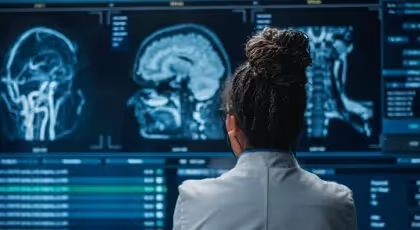
When we have an injury or pain, it is in our very nature to want to know the precise structure that hurts.
After all, not knowing what hurts is like not knowing why you have a water leak in the basement: it's anxiety-provoking!
We often place a lot of hope in X-rays, ultrasounds, scans, and magnetic resonance imaging (MRI). We think that by taking a picture of the area where we feel pain, we should be able to find the culprit causing it.
However, this is mostly incorrect! In the vast majority of musculoskeletal injuries and pain (pain in the joints, muscles, tendons, nerves, menisci, etc.), a clinical examination (evaluation) with a physiotherapist is sufficient to make a diagnosis AND determine the best course of action.
Moreover, undergoing a medical imaging exam will not change the treatment plan to heal the injury. What does that mean?
Physio's assessment
=
Diagnosis Y and treatment plan X
______________
Physio's assessment + medical imaging exam
=
Diagnosis Y again and treatment plan X again
Therefore, a large portion of the imaging exams that are done are completely useless in helping you. It's quite disappointing when we feel like we're getting them precisely to improve our situation!
Even worse, recent studies show that simply receiving a medical imaging result is enough to increase anxiety and negative perception of the injury, in addition to increasing the time it takes to get better. Who would have thought that getting an X-ray for our back pain could be enough to significantly delay our recovery?
So, how can we explain that medical imaging doesn't always help us? There are three fundamental concepts to understand to answer this question:
Firstly, NO technology to date can see pain. Pain is an invisible phenomenon that can only be felt and experienced by a person. We can compare pain to an emotion. No one can 'see' sadness. We can see someone who is sad, just as we can see someone who is in pain, but sadness and pain are only experienced by the person suffering from them.
Secondly, the things we see on medical imaging (wear and tear, osteoarthritis, tears, etc.) are, in part, normal occurrences associated with aging. The older we get, the more small tears we have here and there, and wear and tear all over. So it's normal to see this, and it doesn't necessarily explain why we're in pain.
Thirdly, the things we see on imaging are almost as present (and sometimes more so) in people who have no pain. So, osteoarthritis in the lower back is just as common in people who have back pain as in those who don't. Therefore, there is something else that explains why we are in pain.
However, we shouldn't discard medical imaging altogether. In cases of trauma or injuries that may require surgery, imaging can then be necessary and very useful! The physiotherapist is trained to know if medical imaging is necessary to determine the best treatment plan for the injury.
To summarize, the vast majority of pain and injuries can be treated without the need for medical imaging. The treatment plan will rarely be modified following medical imaging. Pain is never visible on imaging, and its cause is rarely visible. However, when we suspect a fracture or another more serious injury, we will use imaging to rule out serious causes.
To learn more
To learn more about medical imaging, check out the podcast « Parle-moi de santé » produced by one of our physiotherapists, Alexis Gougeon. Episode #27 addresses this topic.
Episode #27 of Parle-moi de santé (medical imaging)
You can also find the podcast episode on the following platforms:

(4).png)
Sources:
- Jarvik (2002). Diagnostic evaluation of low back pain with emphasis on imaging. Annals of internal medicine.
- Murphy L (2008). Lifetime risk of symptomatic knee osteoarthritis. Arthritis Care & Research: Official Journal of the American College of Rheumatology.
- Van Tulder (1997). Spinal radiographic findings and nonspecific low back pain: a systematic review of observational studies. Spine.
Our clients' satisfaction is our priority.
At Physioactif, excellence defines our approach. But don't take our word for it, see what our patients are saying.
Discover our physiotherapy clinics
We have multiple locations to better serve you.
Blainville
190 Chem. du Bas-de-Sainte-Thérèse Bureau 110,
Blainville, Quebec
J7B 1A7
Laval
Montreal
St-Eustache
Vaudreuil
21 Cité-des-Jeunes Blvd. Suite 240,
Vaudreuil-Dorion, Quebec
J7V 0N3
Book an appointment now


